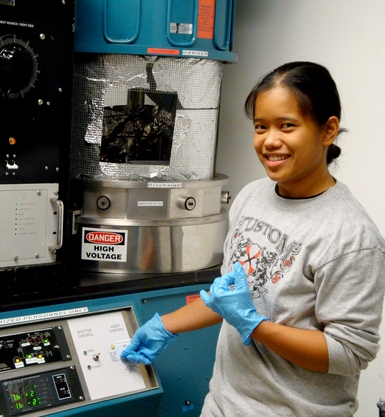Home Island: Maui
High School: H.P. Baldwin High School
Institute when accepted: UH Maui
Project Title: Improving the Uniformity of Thin-Film Coatings for Optical Mirrors
Project Site: Institute for Astronomy, Maui
Mentors: J.D. Armstrong, Jeffrey Kuhn
The Institute for Astronomy (IfA) facility on Maui houses a vacuum chamber capable of coating substrates up to a half-meter in diameter with thin films of aluminum or other substances. In thin-film deposition, the pre-coating and coating processes both contribute to obtaining a high-quality result with a uniformity of coverage similar to that of commercial-grade mirrors. However,
samples coated in the IfA vacuum chamber were observed to have a number of imperfections, including scratches, pits, and tiny pinholes. Therefore, a series of experiments were conducted in order to find the most effective techniques for preparing and coating future telescope mirror substrates. Both electron-beam (“e-beam”) and thermal evaporation methods were used to vaporize aluminum and produce thin-film coatings on a series of flat glass substrates. Microscopy was used to image both the uncoated substrates and the coated end-products in an effort to trace the source of the imperfections. Ultimately, the following factors
were found to play a part in eliminating defects in the final mirror coating: polishing the substrate, modifying the cleaning method, and implementing a “clean room” near the coating lab. A polished substrate and/or a different method for cleaning provides a smoother initial surface to be coated, while the use of a clean room near the coating lab decreases the chance that the substrate will be contaminated with particles. As long as the pre-coated surface of a substrate remains smooth and free of contaminants, the result should be a decreased number of defects.
